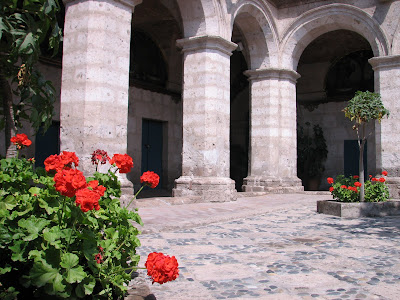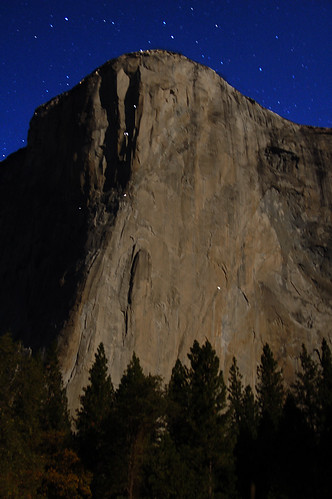
We are now exploring the northern area of Peru, based out of Huaraz. Our first adventure here was the four day Santa Cruz treak, a popular, relatively easy hike through the Huascaran National Park. The most difficult part about the trek was obtaining our Park pass, for about $20 per person. At the Park office they told us we had to have a guide to do any trekking or climbing within park boundaries. Apparently there has been a recent policy change, as of that morning, and a man in a suite and tie seemed quite adamant. After a second opinion, we returned to the Park office in the afternoon. Kevin got a bit argumentative, and through a good bit of persuasion, we convinced one of the officials to give us the passes. He warned us not to tell our friends though. Once in the park, it was absolutely gorgious. Towering peaks, hanging glaciers, deep river gorges. There is a tree that grows here called the queñoa, which has bright red bark that peels off, somewhat like a madrone, and fanned out like an oak. After the first few days we began to understand the weather patterns in the rainy season. Beatiful mornings until about 3 or 4 pm when the clouds roll in and there is a good solid down pour. The weather changed though on our third day and those beautiful mornings dissapeared, it just rained. Now the continuous rain added to all the glacial runoff on the trail, making it a muddy mess. Unlike the States, livestock in Peru roam free, but they roam free in these isolated, contained valleys, so adding to the mud is all of their excrement. This was also the most crowded hike we´ve been on. Seeing two or three groups of foreingers a day, somtimes with donkeys and porters, was a bit of a change. The local attitude was different also. Upon exit of the trek all of the children we encountered blocked the path and told us ¨Basta! Dame carmelo" or "Stop! Give me candy". Also after some elderly women gave us some unecessary directions they required a propina or tip. We´ve tried to refrain from giving charity in the form of refined sugar though.
We are trying to decide what to do with ourselves for the last week. Climbing seems to be an option if the weather holds. There may be an affordable ice climbing clinic just outside Huaraz.







